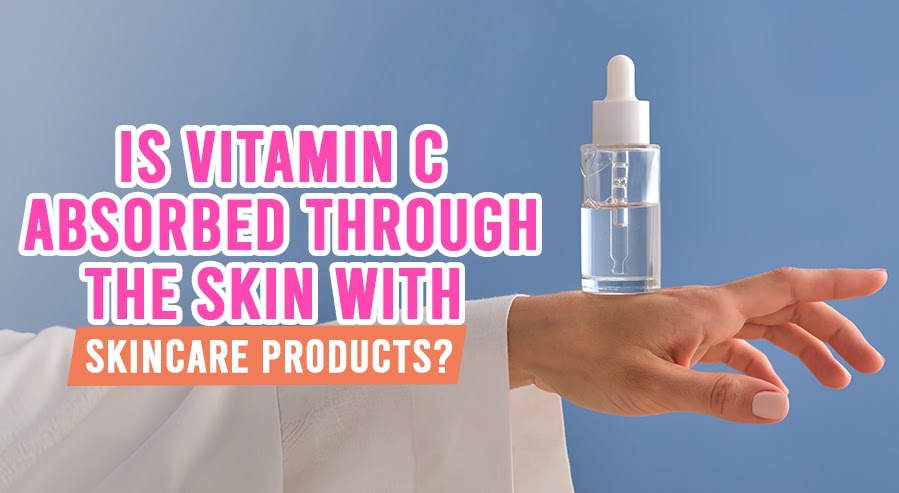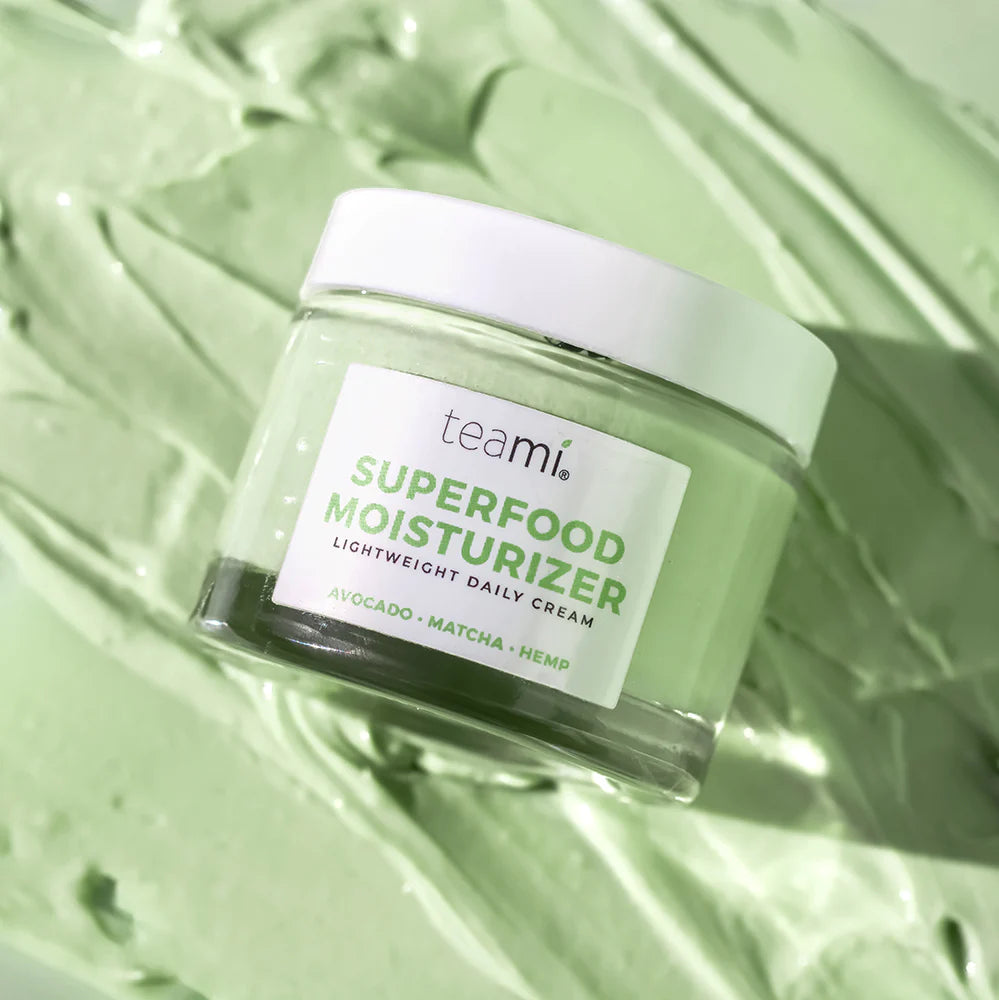Is Vitamin C Absorbed Through The Skin with Skincare Products?

Is applying a Vitamin C serum just as good for your skin as downing a glass of orange juice? Loads of skincare fans believe that Vitamin C is a miracle ingredient - able to do everything from moisturizing your skin to fading sun places. But here's the big question: can it really soak into your skin and do its magic from the inside?
We all want to keep our skin looking young and shield it from the harm caused by pollution and the sun, don't we?
Let's dig into the basics of skin science. We'll look at the structure of the skin, which helps keep Vitamin C stable in products, and if there's solid proof that it lives up to its hype!
Skin Absorption of Vitamin C
When we talk about switching up skincare products, Vitamin C absorption is usually the main thing we pay attention to. Commonly known as ascorbic acid, Vitamin C is a big hit in lots of face serums because it helps make our skin look brighter and reduces signs of aging.
But getting Vitamin C into the skin isn't as easy as slapping on some cream. The outermost layer of our skin, the stratum corneum, acts as a shield against outside things - which makes it tough for Vitamin C to get through. The makeup of Vitamin C and the product's formula are really important here. Products with a pH level close to our skin's, around 4 to 5.5, like to soak in better. To give you an example, a pH of about 3.5 can help with Vitamin C absorption for normal skin types. But for someone with sensitive skin like me, picking products with a pH of 5 to 6 might help dodge irritation.
Not all forms of Vitamin C are created equal. Tetrahexyldecyl Ascorbate, an oil-soluble type, goes into the skin more easily. It is also better at resisting oxidation bringing benefits to deeper skin layers. In my experience products with Tetrahexyldecyl Ascorbate have made my skin feel smoother and firmer without the usual irritation that comes with L-Ascorbic Acid, the most concentrated form of Vitamin C.

From a clinical standpoint - research backs up the value of Vitamin C in skincare, especially focusing on how important the right formulation is.
These ingredients join forces to support the antioxidant effects and make the products last longer on our skin.
Even though our skin naturally tries to block many substances, well-made Vitamin C products can break through this barrier. While finding the perfect product might take some trial and error, the results, in my opinion, are totally worth it.
What Form of Vitamin C Is Best?
Vitamin C also known as ascorbic acid sounds pretty cool for boosting our immune system and fighting off free radicals right? Well you might be wondering if its powers also reach into improving our skin through our everyday skincare rituals. I've looked into just how it affects skin health when we apply it directly.
The ability of Vitamin C to penetrate the skin mostly depends on its formulation. For it to do its job it has to be in the form of L-ascorbic acid with a pH of less than 3.5. From my experiments and discussions about dermatology studies it's clear that this specific form can break through the skin's barrier - sending those much-needed antioxidants deep into the dermal layers.
I found an interesting study where scientists used fluorescence microscopy to monitor Vitamin C absorption. They treated the forearm skin of participants with a 20% L-ascorbic acid answer and saw major penetration and buildup in both the epidermis and dermis.

In terms of what this means for our skin, well-crafted Vitamin C serums once in a while can really turn your skin: these serums can help with collagen production and brighten your complexion. I've personally seen this improvement especially with serums that contain ferulic acid. It stabilizes Vitamin C - ramps up its effectiveness and durability.
Vitamin C has really valuable advantages, like slowing skin aging, reducing pigmentation issues, and boosting skin healing. So, from my findings, adding a quality Vitamin C serum to your skincare schedule can definitely be a transformative step!
What is The Optimal Concentration?
Picking the right amount of Vitamin C for your skincare schedule can totally make a difference right? I've found that it's smart to stick with a concentration between 10% and 20%. This range helps to avoid skin irritation while still providing impressive benefits. I've seen that bumping up the concentration over 20% usually doesn't give you more benefits but does help with side effects like redness and peeling.
When picking a Vitamin C product, I also pay close attention to the pH level. The pH is major because it influences how well the Vitamin C sinks into your skin. Since our skin is naturally a bit acidic - a product with a pH around 2-2.5 is perfect for getting the most out of it. This was highlighted in a 2001 study by Dr. Sheldon Pinnell, which really drove home the importance of the right pH for Vitamin C skincare products.

The type of Vitamin C used also plays a big part. I like Tetrahexyldecyl Ascorbate or THD Ascorbate because it goes deeper into your skin. This means it can kick in faster and more based on both research and my own experience.
If you're thinking about throwing a Vitamin C serum into your schedule, try to find one that keeps at a concentration of 10% to 20% and has a low pH. But if you have sensitive skin, going for a product with a pH closer to that of your skin - around 5 to 6 - might help dodge irritation. Customizing the product to your skin type will make sure it feels nicer and performs better.
Product Quality and Stability
Talking about how vitamin C gets into your tasking from skincare products is something I find pretty important - it's a good idea to pay attention to the details about the product's quality and stability. Vitamin C, or ascorbic acid as it's known in science circles, faces major challenges: it doesn't do well when it hits the air. This inconsistency can really mess up the effectiveness of a skincare product if it's not taken care of right when they make it.
In easier terms, pure Vitamin C usually goes bad fast once serums or creams are added, cutting down on its possible benefits. This forces product makers to find tough solutions. From my own digging and trials, I learned that Vitamin C alternatives have been made to go deeper into the skin and stay stable for a longer time than ascorbic acid. Also, what makes sure Vitamin C stays okay in topical products is important - some pretty careful packing and storing ideas are needed. The best Vitamin C serums are typically kept in dark, airtight containers to keep them away from air and light, which can speed up oxidation.

The way the formula is put together is also meaningful. To give you an example, a watery mix of L-ascorbic acid lets for more Vitamin C to be soaked up by the skin - which helps shield the skin from the sun and fight swelling, not to mention protect against UV damage. But, the concentration needs to be just right - usually around 20% works best - but it also has to be mixed just right to avoid bothering your skin.
Adding this to your everyday skincare schedule can really do wonders for your skin health. A lot depending on the quality and makeup of the product. Keeping this in mind, I always recommend everyone to double-check the stability and formula specifics when picking a Vitamin C skincare product to make sure you get the benefits you want without messing up your skin's health.
Vitamin C Benefits with pH Consideration
When I first looked into adding Vitamin C to my skincare schedule the whole idea of pH levels really grabbed my attention. Did you know that Vitamin C works best in a certain pH environment? Especially in its purest form - L-ascorbic acid - it does its job well under a pH of 3.5. Keeping the pH under this limit keeps the product strong over time and also improves the vitamin's absorption into your skin.
So, how exactly does this low pH help us out? The outermost layer of our skin, known as the stratum corneum, has a naturally acidic pH to protect us. When the pH of a skincare product matches this, it sinks into the skin barrier more easily. For L-ascorbic acid - having a pH below 3.5 means the molecule is uncharged, which makes it easier to slip through the barrier and into the skin.
But there's a catch: this low pH can be pretty harsh, especially for those of us with delicate skin. I always do a patch test first by dabbing a bit behind the ear and waiting a day to check the reaction. No redness or irritation? Great. Then, I slowly work it into my schedule, staying on the lookout for any signs of discomfort.

If you're just starting with Vitamin C serums, starting with a lower concentration is smart. I began with a 10% concentration to get my skin used to it before moving on to stronger things. This strategy helps dodge irritation while still giving major benefits like improved collagen production and a smoother, brighter complexion.
Paying attention to these little details can really help with your skincare regime especially when dealing with active ingredients like Vitamin C. Just remember products aren't a substitute for eating healthy. But honestly seeing my skin look more glowy definitely makes the extra effort worthwhile!
Combining Vitamin C With Other Antioxidants
Let's talk about how to help with your skincare schedule with Vitamin C. It really stands out when teamed up with Vitamin E and Ferulic Acid, which act as its best buddies. They help stabilize Vitamin C and protect it from pollutants and UV rays.
After trying out lots of products I've seen that Vitamin C doesn't do well by itself because it tends to break down in air and light. But pairing it with Vitamin E and Ferulic Acid is like giving it a shield against photoaging and irritation - together they help the Vitamin C penetrate deeper into your skin for better results.
I'm a fan of products that mix these three antioxidants - they're more useful in guarding against the sun and are awesome for making your skin smoother and reducing wrinkles. Some products also claim to lighten dark places, though we need more proof to back up this claim fully.

When picking a product I usually choose serums and creams that have L-ascorbic acid, the active form of Vitamin C, in concentrations from 10% to 20%. It's also a good idea for the pH level to be below 3.5 which helps your skin soak up the vitamin C better - this combo stabilizes the vitamin C and makes it more useful at boosting your skin.
These antioxidants do a great job of creating a barrier against UV rays, especially when used with a broad-spectrum sunscreen. I always keep this in mind when planning my skincare schedule to get the most protection and rejuvenation benefits.
Adding these strategies into your skincare schedule can make a big difference especially if you're looking to fight signs of aging or environmental damage. Picking the right products, knowing how they work together and setting up a smart skincare plan that includes gentle cleansing, lots of moisturization and strong sun protection are important steps to keep your skin looking awesome.
Finding The Perfect Blend
Isn't it cool how things like stability, concentration, and pH levels are so important for Vitamin C in skincare products? If you're thinking about adding these powerful products to your schedule remember it's a good idea to do a patch test. I learned how valuable this step is the hard way after dealing with some annoying skin irritations - something nobody wants especially if you have sensitive skin.
Here's an easy rundown on how to do patch testing: pick a small hidden spot on your skin, dab a little bit of the product on and then hang tight for 24 hours to check if there's a reaction. This little step is really meaningful and can save you a bunch of discomfort.

Moving on to wellness improvement - have you heard of Teami? We have some awesome teas and wellness products. We pay attention to boosting health and making your skin glow naturally!
Why not take a look at our collection? You might just find the perfect blend to help with your well-being!
Subscribe to our Newsletter
Subscribe to our newsletter and get 10% off your first purchase
 Instagram
Instagram



